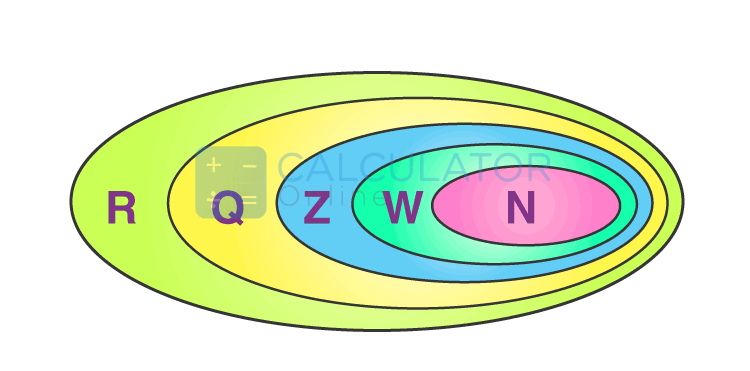|
Positive Rational Numbers
|
Negative Rational Numbers
|
|
Both the numerator and denominator are the same sign
|
Numerator and denominator are of opposite signs
|
|
All are greater than 0
|
All are less than 0
|
|
Examples:
13/15, 8/10, and 4/5
|
Examples:
-3/19, 9/-13, and -1/5.
|
Arithmetic operations on Rational numbers
In mathematics, basic arithmetic operations are performed by rational numbers on integers.
To solve the arithmetic operations. Let us suppose p/q and a/s
Addition:
“When we add p/q and a/s, it is necessary to make the denominator the same”
p/q + a/s = (p+a)/qs
Example:
1/4 + 3/8 =(2+3)/8 = 5/8
Subtraction:
“Similarly, if you subtract p/q and a/s, you need to make the denominator same, first, and then do the subtraction”
p/q - a/s = (p - a)/qs
Example:
3/4 - 2/8 = (6-2)/8 = 4/8 = 1/2
Multiplication:
While multiplying two rational numbers, both the numerator and denominator of the rational numbers are multiplied respectively.
p/q * a/s = pa/qs
Example:
1/4 × 5/4 = (1×5)/(4×4) = 5/16
Division:
If p/q is divided by a/s, then it is represented as
(p/q)÷(a/s) = ps/qa
Example:
1/4 ÷ 3/8 = (1×8)/(4×3) = 8/12 = 2/3
Multiplicative Inverse:
“The reciprocal of the given fraction is the multiplicative inverse of the rational number”
Example:
6/7 is a rational number, then its multiplicative inverse is 7/6, therefore (6/7)x(7/6)=1
Rational Numbers Properties:
A rational number is a subset of the all real number since the rational number will follow all the properties of the real number system. Following are some important properties of rational numbers:
-
If we multiply, add, or subtract any two rational numbers, then the result will become a rational number.
-
In case we divide or multiply both the numerator and denominator with the same factor, the result will remain the same.
-
When we add zero to a rational number, then we will get the same number itself.
-
Generally, rational numbers are closed under addition, subtraction, and multiplication form.
How to find a rational number between two rational numbers?
No doubt, there are infinite numbers of rational numbers between any two rational numbers. By using two different methods, you could easily find rational numbers between two rational numbers. Right now, let us have a look at the two different methods.
Method 1:
In the 1st method, we find out the identical fraction for the given rational numbers and then find out the rational numbers in between them. The required numbers should be rational numbers.
Method 2:
In the 2nd method, we find out the mean value for the two given rational numbers. The mean value should be required for a rational number. If you want to find more rational numbers, then repeat the same process with the old and newly obtained rational numbers.
Solved Examples:
Example 1:
Identify each of the following as what are rational numbers or irrational: 2/5, 80/13008, 15, and √7.
Solution:
For 2/5
2/5 is a rational number as it can be expressed in the form of a fraction. 2/5 = 0.4
For 80/13008
Fraction 80/13008 is rational.
For 15
15, also be written as 15/1. Again a rational number.
For √7
Value of √7 = 2.64575….. It is a non-terminating value and hence cannot be written as a fraction form. Therefore it is an irrational number.
Example 2:
Identify whether a mixed fraction, 1 ¾ is a rational number.
Solution:
The Simplest form of 1 ¾ is 7/4
Numerator = 7, which is an integer
Denominator = 4, is an integer and not equal to zero.
So, 7/4 is a rational number.
Are negative numbers rational?

.webp)
